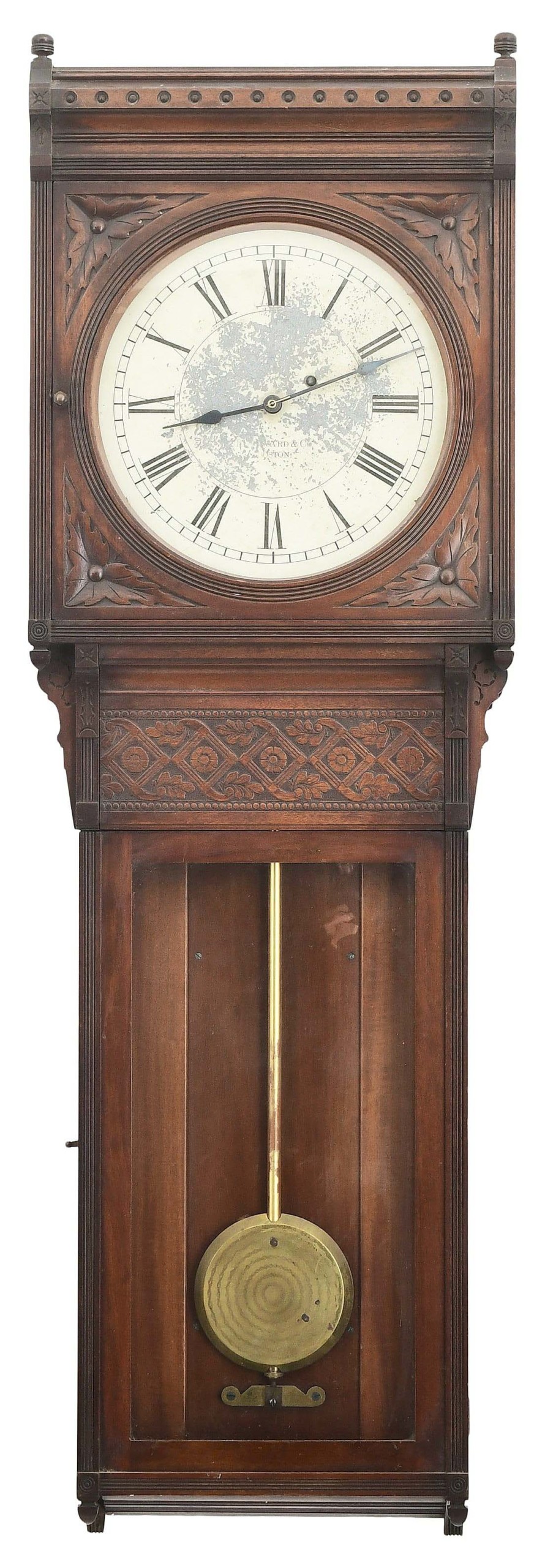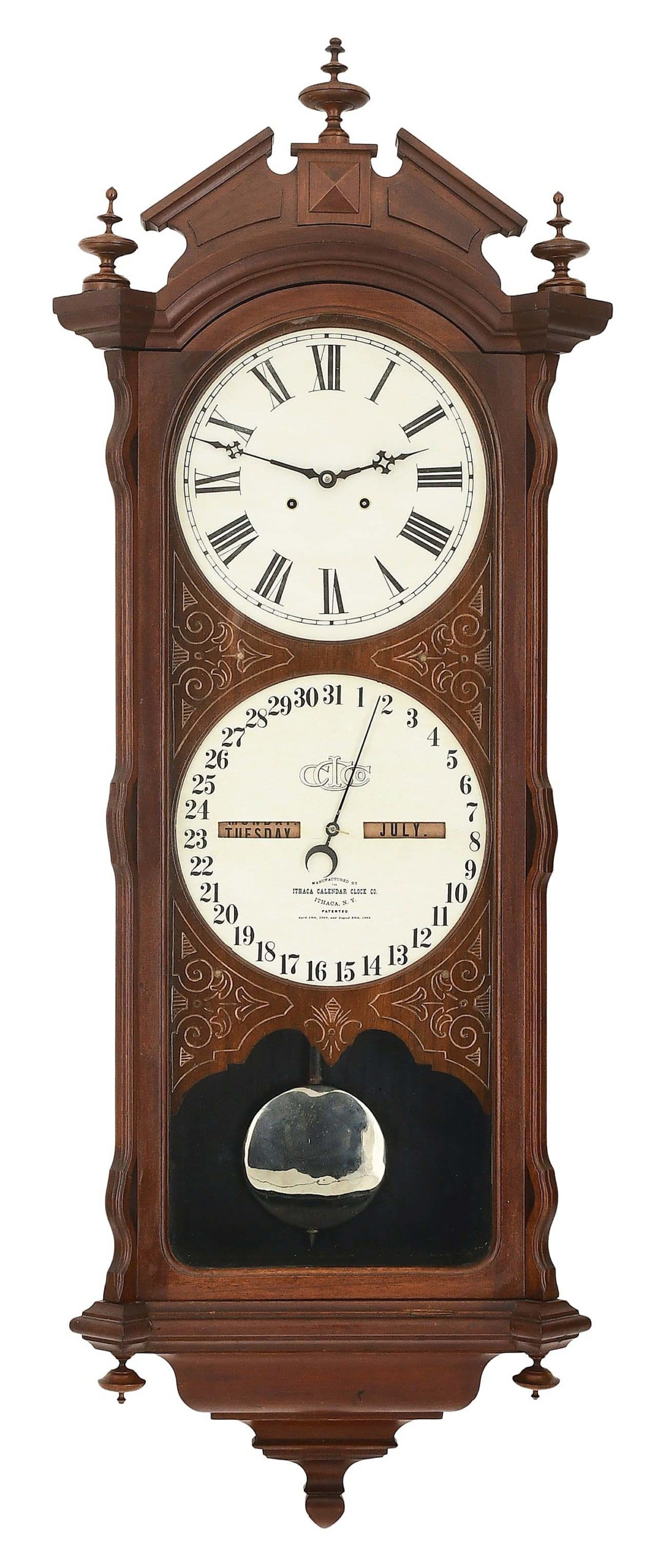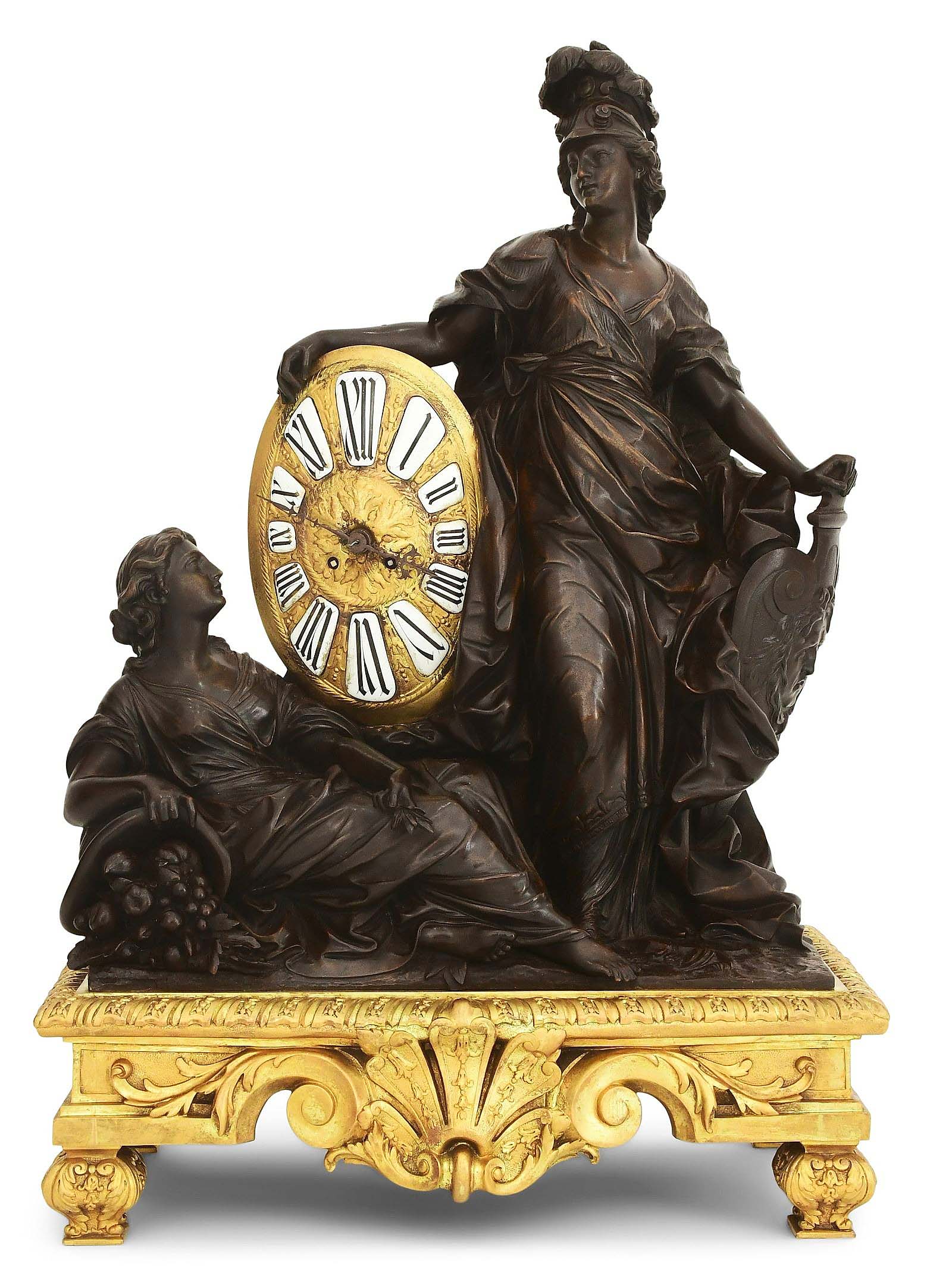
Earning the sale’s highest price, $18,750, was a Rolex Yacht-Master II wristwatch, reference number 116681M, 18K Everose gold and Oystersteel, 44 millimeters, with box and papers ($15/20,000).
Review by Carly Timpson; Photos Courtesy Fontaine’s Auction Gallery
PITTSFIELD, MASS. — On April 13, Fontaine’s Auction Gallery conducted an auction of American and European timepieces. Featuring more than 480 lots spanning from the Eighteenth to the Twenty-First Century, the timepieces came from various sources, including the estates of John Higgins, Virginia Beach, Va.; Mark Lindenbaum, Hewlett, N.Y.; Clive Godwin, Natick, Mass.; The Paul VanDemark Collection, Delmar, N.Y.; as well as other estates and private collections.
Fontaine’s owner and auctioneer John Fontaine shared that buyers in this sale were predominantly private collectors hailing from the United States, Europe and Asia. In total, the auction realized $560,000 and had a 97 percent sell-through rate.
The sale’s top lot, a Rolex Yacht-Master II wristwatch, came from a private Shelton, Conn., collection. The 44-millimeter watch, made circa 2021, achieved $18,750, comfortably within its $15/20,000 estimate. Designed with Rolex’s proprietary alloys, 18K Everose Gold and Oystersteel, the watch had a white dial and a vibrant blue rotatable Ring Command bezel and was sold with its original box and papers.

This Number 85 Regulator wall clock by E. Howard & Co., late Nineteenth Century, walnut case with brass weight-driven movement, 60 by 19½ by 7½ inches, achieved $15,000 ($15/20,000).
Crossing the block for $15,000 was a late Nineteenth Century wall clock, the Number 85 Regulator made by E. Howard & Co. Housed in a foliate-carved black walnut case, the brass eight-day weight-driven movement and the dial were both signed “E. Howard & Co., Boston” and the weight was stamped “2.” The walnut case, maintaining its original finish, was missing its two rear upper finials, and the white dial exhibited some spotted paint loss. However, the wall clock was in functioning condition and met its low estimate.
Several inches larger than that previously mentioned, another wall clock, this one by Seth Thomas, easily exceeded its $6,000 high estimate to finish at $11,875. Thomas’ circa 1890 Office Calendar Number 11 displayed two dials in an oak and walnut case, with a brass eight-day time-only weight-driven movement. On the top was a traditional Roman numeral dial while the bottom was a calendar with date numbers 1 through 31 and rolls for the weekdays and months. The wood case was carved with flowers and foliate designs and had turned columns on either side. The main clock dial was marked “Seth Thomas” and the case was marked “0981L.”
Coming from a private collection in San Pierre, Ind., was a circa 1886 Regulator Number 19 wall clock, also by Thomas. Housed in an open oak case, the mechanics of this wall clock included an eight-day weight-driven movement with maintaining power, a jeweled deadbeat escapement, a two-jar mercurial pendulum and sweep seconds. Both the dial and movement were signed by the maker and the clock found a buyer at $8,125.

This Number 2 Bank wall clock by Ithaca Calendar Clock Co., circa 1880s, walnut case with paper dials, 58½ by 21½ by 9 inches, was bid to $8,125 ($4/6,000).
Also making $8,125 was a Number 2 Bank wall clock by Ithaca Calendar Clock Co. This circa 1880s clock consisted of a walnut case with paper dials and an eight-day time-only weight-driven movement with detached perpetual calendar mechanism. The lower calendar dial was monogrammed “ICCC” and marked “Manufactured by the Ithaca Calendar Clock Co., Ithaca, N.Y.” Behind the front glass cover door was a thin carved panel holding the two paper dials with a cutout to display the swinging pendulum. This Number 2 Bank clock came from a private collection in Newtown, Penn.
A circa 1886 bracket clock, listed in the Tiffany & Co. Makers records as being made for Charles W. Batchelor, a close associate of Thomas Edison, finished above its $7,500 high estimate, earning $8,750. The portable clock was in a mahogany case with gilt metal decoration and had a brass eight-day spring-driven time and quarter striking movement with a moon phase display above the dial. The clock’s metal detailing includes imagery of birds, plants and several repetitions of a winged figure with a scythe. Batchelor’s clock was in very good overall condition, retaining its original finish, but was in need of adjustment and cleaning.

A French gilt and patinated bronze figural mantel clock, signed “S. Marti,” late Nineteenth Century, 29 by 20 by 11½ inches, crossed the block for $5,900 ($5/7,500).
Another notable lot was a late Nineteenth Century French gilt and patinated bronze figural mantel clock depicting two robed classical figures. The standing male figure was holding a shield in one arm and the other wrapped around the clock’s dial. The other figure was positioned lounging beneath the dial and propped up against an overflowing cornucopia. The figures were raised on a foliate and scrollwork base. The French Ebauches eight-day spring-driven time and strike movement was signed “S. Marti.” The figural mantel clock was in good aesthetic condition but was not tested. Still, it was bid to $5,938.
With “Richd. Parsons/London” marked on the dial and “No. 54 Goswell Street” on the movement, an early Eighteenth Century six-tune musical bracket clock with a brass-mounted ebonized case made $5,600. The repainted face of the clock had floral decoration in the spandrels and a delicate bird on a rose above the 12 and beneath the arch of the six song selections. The catalog describes the eight-day “double fusee verge escapement movement which strikes a single bell at the top and bottom of the hours” and “every three hours the selected song is played, one of six musical tunes is played on demand with a pull cord.” On each of the four corners at the top of the case was a newer pineapple finial.
Prices quoted include the buyer’s premium as reported by the auction house. Fontaine’s next auction, on May 18, will offer fine and decorative arts. For information, www.fontainesauction.com or 413-448-8922.












